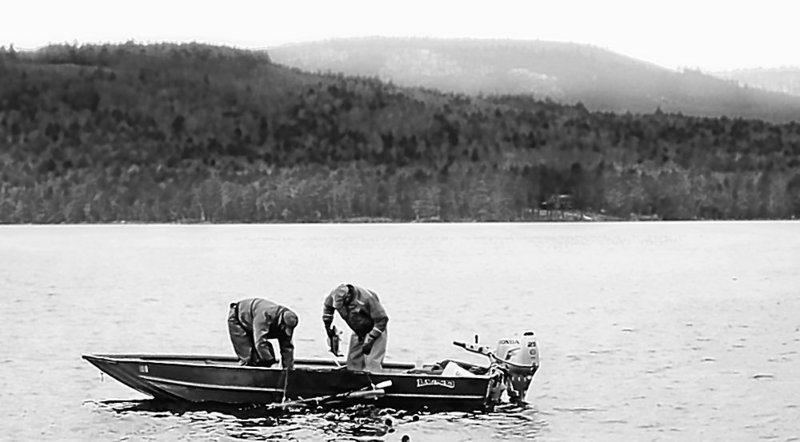WATERVILLE – Clear, clean water is what people value most about a lake, according to a local aquatic biologist.
But it’s the people who live lakeside — the ones who most often get to enjoy the sight of the shimmering water — who are responsible for the continuing decline of the water quality.
They are also the ones who can turn that trend around.
That was a message underscored by speakers at the 40th annual Maine Lakes Conference at Colby College on Saturday.
Maggie Shannon, executive director of the Maine Congress of Lake Associations, asked an audience at the conference what they thought Maine’s lakes might look like in 100 years from now if no great efforts are taken to sustain them.
“It’s an enormous question,” Shannon said. “A good 50 percent of the answer lies in the stakeholders, and that’s you.”
Scott Williams, an aquatic biologist and the executive director of Maine Volunteer Lake Monitoring Program, explained last week that the clarity of water in lakes worsens when phosphorus levels rise, because phosphorus stimulates algae production.
There are high levels of phosphorus in runoff that comes from lawns and roads. So, as the land around lakes is developed, more phosphorus gets into the water, and it becomes less clear, said Williams, who didn’t attend the conference.
Williams said there are measures that people who live by lakes can take to lessen their impact on the water quality, such as stabilizing soil erosion on lakeside property and not using fertilizers that contain phosphorus.
He said natural vegetation catches a lot of pollutants in runoff before they can get to a lake, so the smaller the size of manicured lawns, the better.
But making those changes takes energy — something the yearly conference at Colby is meant to generate.
The daylong conference drew about 130 people, from members of local lake associations to officials from the state’s Department of Inland Fisheries and Wildlife.
The keynote speakers were Whitney King, a chemistry professor at Colby, and David Hart, director of the George J. Mitchell Center for Environmental and Watershed Research at the University of Maine.
King showed measurements of water clarity taken from East Pond, one of the Belgrade Lakes, during the last 35 years.
Water clarity is measured by Secchi depth, which is taken by lowering a disk into the water until it isn’t visible. Lakes with cloudier water have lower Secchi depths.
According to King, the Secchi depth of East Pond oscillated from 4 to 6 meters in the 1970s. Last year, it ranged from 1 to 7 meters.
“There’s definitely been a change in the ecosystem of the lake,” he said.
He also said there’s no simple way to reverse the effects.
“I don’t think there is enough money to fix the lake,” said King.
The question is, he said, “How do you change people’s perception, so they change their practices?”
Hart talked about the importance of communicating the data collected from research about lakes to the people who have a vested interest in sustaining them. That, he said, is how to effect change.
But taking knowledge and turning it into action isn’t easy, he said.
“I can tell you how complex ecosystems are. They are simple compared to this challenge,” Hart told his audience.
“Go out and be the next generation of problem-solvers,” he said.
Send questions/comments to the editors.




Success. Please wait for the page to reload. If the page does not reload within 5 seconds, please refresh the page.
Enter your email and password to access comments.
Hi, to comment on stories you must . This profile is in addition to your subscription and website login.
Already have a commenting profile? .
Invalid username/password.
Please check your email to confirm and complete your registration.
Only subscribers are eligible to post comments. Please subscribe or login first for digital access. Here’s why.
Use the form below to reset your password. When you've submitted your account email, we will send an email with a reset code.